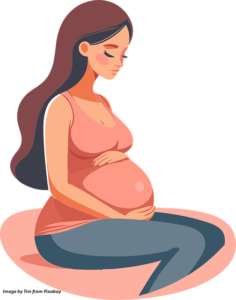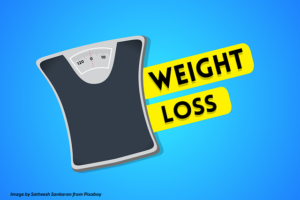 This is common in the first three months of pregnancy and occurs in 50% to 80% of pregnant women. The symptoms often occur in the morning (from 6-9 am) but may occur at any time during the day. The impact and severity of the nausea and vomiting is different for each woman.
This is common in the first three months of pregnancy and occurs in 50% to 80% of pregnant women. The symptoms often occur in the morning (from 6-9 am) but may occur at any time during the day. The impact and severity of the nausea and vomiting is different for each woman.
SIGNS AND SYMPTOMS
It ranges from mild to severe nausea with or without vomiting. This is usually during the first 12 to 14 weeks of pregnancy. It may continue longer, and for a few women, may last throughout pregnancy. By the end of the third month, most symptoms will resolve in the majority of women. The symptoms are more severe in those with multiple pregnancy or molar pregnancy.
CAUSES
The exact causes of nausea and vomiting during pregnancy are unknown. Nausea may result from rising levels of human chorionic gonadotrophin (pregnancy hormone) in the blood or other hormonal changes that take place to permit normal growth of the fetus.
PREVENTIVE MEASURES
Do not let your stomach get empty; eat something every 2 hours if necessary and take frequent sips of nourishing fluid.
POSSIBLE COMPLICATIONS
Hyperemesis gravidarum, is a condition of pregnancy characterized by severe nausea, vomiting, weight loss, and electrolyte disturbance (rare). This would require hospitalization for drips and medications.
TREATMENT
This is a list of some simple advice, which may help you cope better or reduce the severity of nausea and vomiting during the first trimester of pregnancy.
Lifestyle change
- Avoid loud, crowded places and too much activity. Be aware of the effects of exercise since increased intensity of exercise has been correlated with increased nausea and vomiting.
- Avoid warm places and those with limited airflow.

- Sometimes smells can trigger feelings of nausea. Therefore, you should avoid places and activities where smells are prominent, such as buses, subways, restaurants, around smokers, food markets: use the exhaust fan in the kitchen or use the oven or microwave for cooking.
- Take vitamins (folic acid) at night and see if they can be tolerated better than in the morning. The chewable type may be better tolerated.
- Upon rising in the morning, try brushing your teeth after a light meal (eg biscuits, crackers). Try using a fruit-flavored toothpaste (children’s toothpaste).
- Get out of bed slowly (effectiveness may be due to similarity to motion sickness). Lie down and remain still when nauseated.
- Avoid stress. Living with the constant or frequent threat of nausea and/or vomiting and/or retching is a stressor in itself.
- Acupressure has been used to treat nausea and vomiting in pregnancy. Even though the effectiveness has not been conclusively proven in research, this non-medicated option can be used since it has no known adverse side effects and is safe in pregnancy. There are many commercial products available and most of these apply pressure to an area above the wrist.
- Keep a daily record of your weight.
- A trial of vitamin B-6 may be recommended and may work for some women.
- Resting in a dark and quiet room provides some relief for most women.
Dietary instructions
- Try dry, bland food such as the BRAT diet (bananas, rice, apples, and toast).
 Easily digestible carbohydrates such as bagels, plain crackers, dry cereal or plain toast are usually less likely to worsen your symptoms.
Easily digestible carbohydrates such as bagels, plain crackers, dry cereal or plain toast are usually less likely to worsen your symptoms. - Avoid fat, fried or spicy foods (fat stays in the stomach longer, and is more likely to make you feel more nauseous). Eat a meal slowly. You can try taking high-protein snacks. Don’t force yourself to eat and don’t let others force you.
- Eat lots of little meals; don’t let the stomach get empty. This means taking small frequent meals throughout the day. This is less taxing on your digestive system. Do not lie down flat for at least two hours after eating.
- Take advantage of good days or good hours of the day. Eat what you can when you feel like it. Cold foods have less odor and may be easier to swallow. Cold foods such as dairy products, sandwiches, ice cubes or ice cream and fruits may help.

- It is important to keep well hydrated. Dehydration can exacerbate nausea. Drink liquids in a cup with a lid on if the smell is a trigger. Isotonic sports drinks (without caffeine) can quickly restore balance if you think you are dehydrated. Try to avoid liquids at mealtimes. It is better to drink 30 to 60 minutes before or after eating to minimize stomach fullness.
- Research shows that ginger may effectively and naturally decrease nausea in some women. It can be easily prepared as a drink. Ginger ale may help but the ginger content varies widely between brands.
- Lemon in tea or water or just licking lemon slices may help. Fruit smoothies are a good option – it can be a complete meal by itself (provide some calories and hydration as well). Since it is already blended, this will leave the stomach faster, helping to avoid nausea.
- Try peppermint gum.

- Many multivitamins, minerals and other supplements can make nausea and vomiting worse – if you are taking them, it is a good idea to stop them immediately and discuss this with your doctor. You only need folic acid during the first few months of pregnancy.
Medication is usually not prescribed for this disorder, but if the symptoms are severe, your doctor may prescribe some for relief. Sometimes, admission to the hospital for treatment may be necessary in severe cases.
Please note that there is wide variation in response to all the above advice. Some of these may or may not work for you. You may have to try to find out which one will be able to relieve some of your symptoms. Hopefully, you will be able to get through this period smoothly and it is something to look forward to at the end of your pregnancy.
Please see your doctor immediately if you continue to feel unwell or the symptoms have become more severe such as:
- You vomit blood or material that resembles coffee grounds.
- Abdominal pain, cramping, or fever occurs.
- Significant weight loss.
- Unable to drink any fluids at all and associated with low or no urine output.
To print a pdf copy, click HERE
Follow at Instagram @obgyn.com.my


 Easily digestible carbohydrates such as bagels, plain crackers, dry cereal or plain toast are usually less likely to worsen your symptoms.
Easily digestible carbohydrates such as bagels, plain crackers, dry cereal or plain toast are usually less likely to worsen your symptoms.

